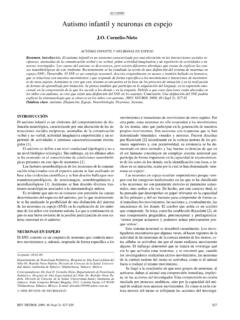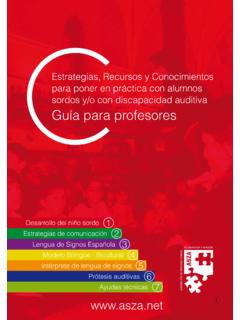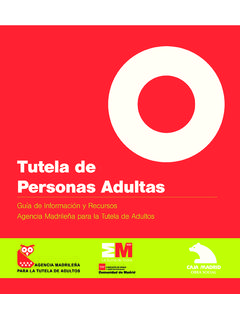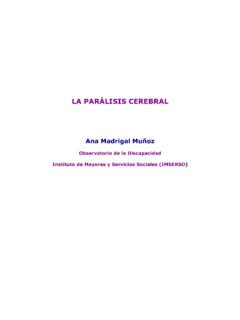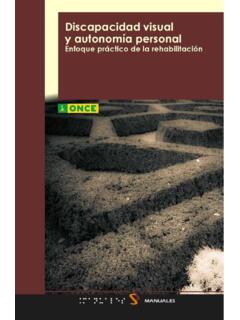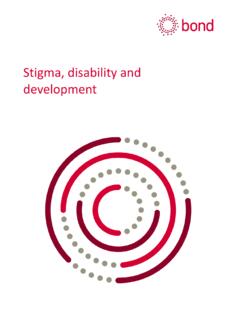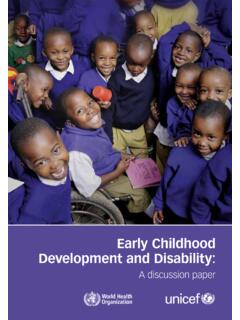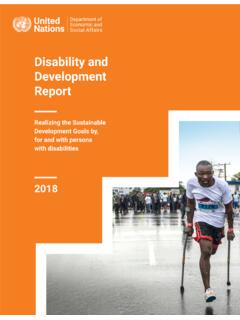Transcription of Disability and Social Exclusion - USAL
1 Disability and Social Exclusion in the European Union Time for change, tools for change Final study report HSO Vammaisfoorumi ry (Finnish Disability Forum) MHE-SME Inclusion Europe Under the auspices of the: European Disability Forum With the support of the European Commission Preparatory actions to combat and prevent Social Exclusion The information contained in this report does not necessarily reflect the opinion of the European Commission 2 This study, funded by the European Commission DG Employment and Social Affairs (Project Number VP/2000/008-query), was achieved through the partnership of 7 Disability organizations under the coordination of the Greek National Confederation of Disabled People, and under the auspices of the European Disability Forum.
2 The title of the project is: Disability and Social Exclusion in the EU time for change, tools for change The project aims at the collection of quantitative and qualitative information on poverty and Social Exclusion faced by people with disabilities. A questionnaire was designed and circulated between May-July 2001in several European Countries. This study report is the result of an analysis of the information gathered and of the comments of over 100 participants from Disability organisations, decision makers, and other stakeholders attending a conference in March 2002 in Athens, where a draft report was presented. The co-ordination of the study was undertaken by the Greek National Confederation of Disabled People The partner organizations involved in the project were the National Councils of disabled people1 in Greece, Spain, France, Finland, Sweden, and the following European Non Governmental Organisations: the European Blind Union, Inclusion Europe2, and Mental Health Europe (See Appendix I).
3 They all played an active role in designing the study, translating the questionnaire, disseminating it including through seminars, collecting the data, and contributing to the content of the report. The European Disability Forum (EDF), an umbrella organization gathering 17 National Councils in the European Union and European Economic Area, and over 70 European NGOs (including all the partners of this project) was also involved. Professor Yannis Yfantopoulos of the University of Athens provided his invaluable expertise on statistical and methodological tools for the design of the questionnaire and study, and for the analysis of data collected. 1 Platform organisations with membership of major national organisations representing all the main impairment groups.
4 2 Representing people with intellectual disabilities. 3 CONTENTS I. 4 II. III. 7 EUROPEAN POLITICAL 9 TOWARDS Social 9 DISABLED PEOPLE IN THE EUROPEAN 10 12 Employment .. 14 AND METHOD OF THE 16 3. EMPIRICAL 20 IDENTITY OF 20 MINIMUM INCOME AND Disability 20 Disability 22 27 32 ACCESS TO GOODS AND 35 3. 6. 1 Health and Social services .. 36 Public 44 Social Environment .. 45 Transport .. 50 Information Society .. 52 Availability of Social Services .. 57 4 ASSESSMENT OF NATIONAL POLICIES FOR Social 60 5. FACTORS CONTRIBUTING TO Social 62 6. POLICY CONCLUSIONS AND PROPOSALS FOR 65 Disabled people and poverty .. 65 65 Employment .. 66 Access to health and Social services .. 68 Public 68 Social Environment .. 69 Transport .. 70 Information Society.
5 70 Availability of 71 General 72 APPENDIX I .. 74 1. ORGANISATIONS INVOLVED IN THE 74 APPENDIX 75 1. THE DESIGN OF A 75 2. DISSEMINATION OF THE 75 APPENDIX III 77 4 I. FOREWORD People with disabilities are undoubtedly among the most vulnerable at risk of Social Exclusion , as this valuable study clearly shows. poverty and Social Exclusion are inextricably linked, and a major cause of poverty is the lack of employment. For people with disabilities, the situation with regard to employment is far from ideal. On average, the participation rate of severely disabled people in the workforce is less than half that of able-bodied workers. Efforts have been made in most EU Member States to improve the participation rate but the obstacles to gaining - and retaining -employment, such as lack of access to education and to vocational training, limited availability of housing, assistive technology and accessible transport are still significant.
6 The study findings illustrate very well where more work is needed. The study also highlights the link between Social Exclusion and discrimination. The major European level legally binding policy instrument is the Anti-Discrimination Directive, passed in 2000 by Council, which enters into force next year. The Directive will help to protect people with disabilities against discrimination in the workplace. It will also require employers to provide, where reasonably possible, facilities to permit people with disabilities to participate in the workforce. Directorate-General for Employment and Social Affairs has created a network of legal advisors who are monitoring the implementation of the Directive at national level. A complimentary instrument is the National Action Plan to combat poverty and Social Exclusion , which each Member State produces.
7 The NAPs, like the study's findings, reveal that significant improvements are still to be made in particular with regard to access to education and housing systems to make them more responsive to the needs of workers with disabilities. Future NAPs will build on this information and report progress. Promoting the rights, and raising the level of awareness of people with disabilities is also the main objective of the European Year of People with Disabilities 2003. We hope the Year will encourage reflection, discussion and action about measures required to promote equal opportunities, and that it will challenge the barriers, also identified in this study, that prevent people with disabilities from participating in many aspects of everyday life. The challenge now is to deliver for people with disabilities not just life, but quality of life and to identify and provide opportunities for full Social inclusion.
8 I commend EDF and its partnership Disability organizations for this powerful contribution towards meeting that challenge. Anna Diamantopoulou, European Commissioner on Employment and Social Affairs 5 II. PREFACE The National Confederation of Disabled People in Greece decided in early 2000, together with National Councils from Spain, France, Finland, Sweden, and Spain, and with 3 European Non Governmental Organisations, representing major impairment groups: Mental Health Europe, Inclusion Europe, and the European Blind Union, to launch a common project, under the auspices of the European Disability Forum, within the framework of the European Community preparatory actions on Social Exclusion . The Lisbon strategy had just been launched, putting for the first time Social Exclusion high on the European Union agenda.
9 The European Council had set ambitious objectives aiming at reducing considerably poverty and Social Exclusion by the end of the decade. Disabled people are a group at high risk of Social Exclusion because of the physical, legal, financial, and attitudinal barriers from society that they face in their everyday life. The high vulnerability of disabled women and men was recognised by the Nice European Council in December 2000, in the common EU objectives on Social inclusion. Despite this, quantitative information on the situation of disabled people in Europe, and to their level of participation in society is scarce, and therefore there is little understanding of the causes of their Social Exclusion both at National and European level. By implementing this project, we were convinced that in order to achieve progress in the fight against disabled people, it was crucial to investigate the link between Social Exclusion and Disability , from the perspective of disabled people and families of disabled people unable to represent themselves.
10 At the same time we wanted our project to contribute to the development of policy indicators and actions for the fight against Social Exclusion . This study, which is the result of the commitment of all the project partners, of the contributions of over 150 associations of disabled people across Europe, and of discussions held at our final conference in Athens last March, is a step forward in this sense. The report provides information on the causes of poverty and Exclusion of disabled people and their families in the areas identified by the Council s objectives. The study shows that poverty is a reality for many households with a disabled person. A great financial strain is put on them because of the extra costs related to Disability and the failure of the Social protection systems to adequately address this.
